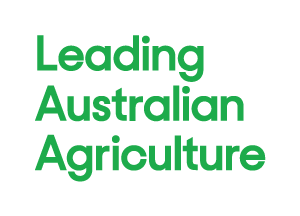HOPE is returning to regional Australia as farmers welcomed scattered rains across the country through April. While one rainfall does not break a drought, it does go a long way to giving grain producers the impetus to sow winter crops and confidence to livestock farmers to hold onto, or even restock, on buoyed prospects of renewed pasture growth.
The Westpac-NFF Commodity Index, measuring the weighted world price of Australia’s major agricultural commodities, dropped 2.2% over April as the rain – combined with speculation of higher than expected production volumes in North America and relaxed beef import restrictions in Asia – start to take their toll in Australia’s key markets.
“A good portion of Western Australia, New South Wales, Victoria and South Australia received much-needed rain in the later part of April – arriving just in the nick of time for many farmers,” National Farmers’ Federation (NFF) Vice-President Charles Burke said.
“The global market for agricultural commodities is exceptionally responsive to emerging trends and the prospects for future production. Already we are seeing the promise of better planting conditions in Australia influencing world prices, with all major crop price indices easing during the month.
“When you throw into the mix the international expectation that plantings of wheat, barley and canola in key production regions of the United States and Canada are expected to yield much larger crops in the months ahead, it’s no surprise the market is already making adjustments.
“Meanwhile, the uncertainty surrounding Korea’s response to the re-entry of US beef products into the country is also having an impact. Unfortunately for Australian beef producers, the re-entry has lowered demand for our beef at a time when many have been forced to de-stock due to the prolonged and ongoing drought.”
According to Westpac Senior Economist Matthew Hassan, the general situation is still positive for rural exporters.
“Commodity prices are well up on a year ago and demand looks likely to remain strong,” Mr Hassan said.
“The world economy continues to grow strongly, led by booming demand in China and good growth across the rest of Asia. Consumers are also playing a bigger part in Asia’s expansion, which bodes well for continued strong growth in demand for rural commodities.
“While the associated price rises haven’t been as spectacular as the minerals and metals prices in recent years, rural commodity prices are running near historical highs.
“That said, recent rises in the Australian dollar are taking some of the gloss off global prices for local producers. The currency’s move over 80 US cents looks set to be sustained for some time yet, and will limit the extent to which some farmers benefit from buoyant global conditions.”
[ENDS]
The Westpac-NFF Commodity Index is weighted according to the value of Australian agricultural exports and includes only rural commodities – unlike other price indices that are overshadowed by oil, mineral and energy prices. It provides daily movements based on prices of Australia’s eight key farm exports – barley, beef, canola, cotton, dairy, sugar, wheat and wool – in both $US and $A.





Add comment